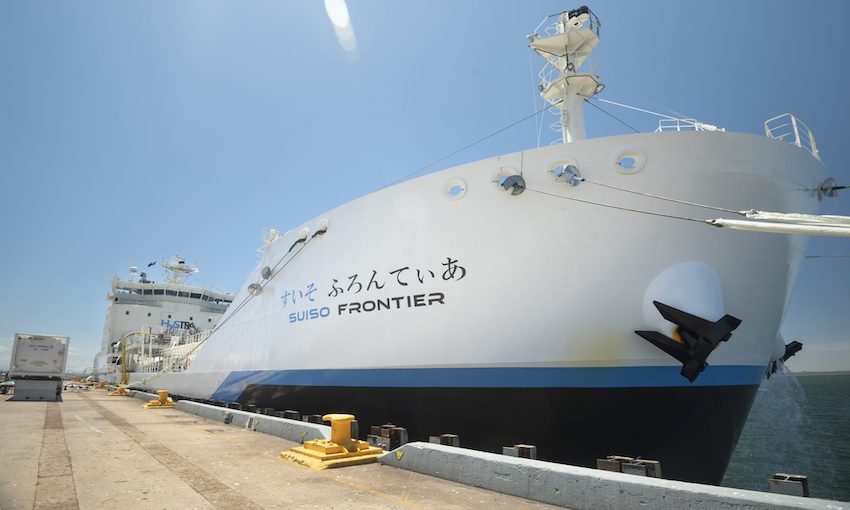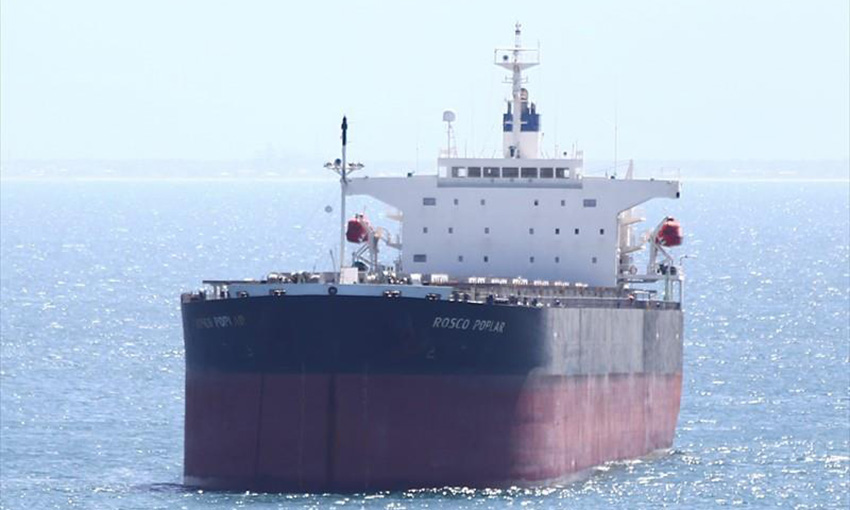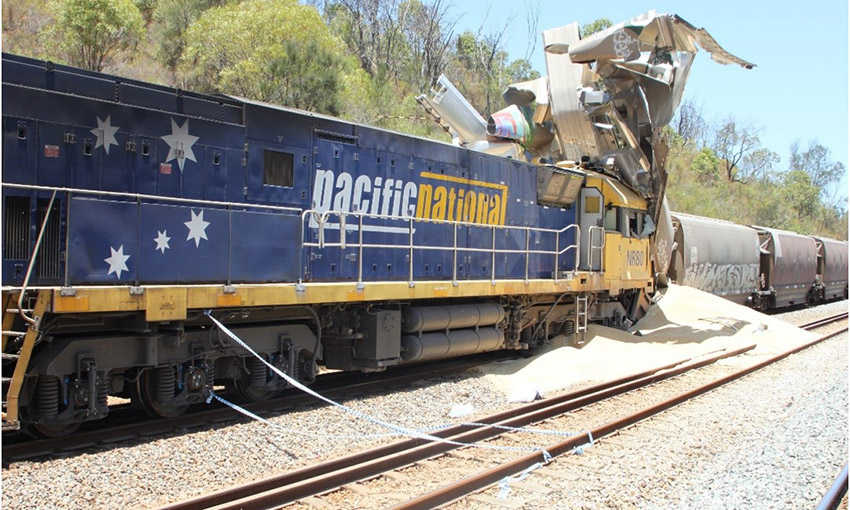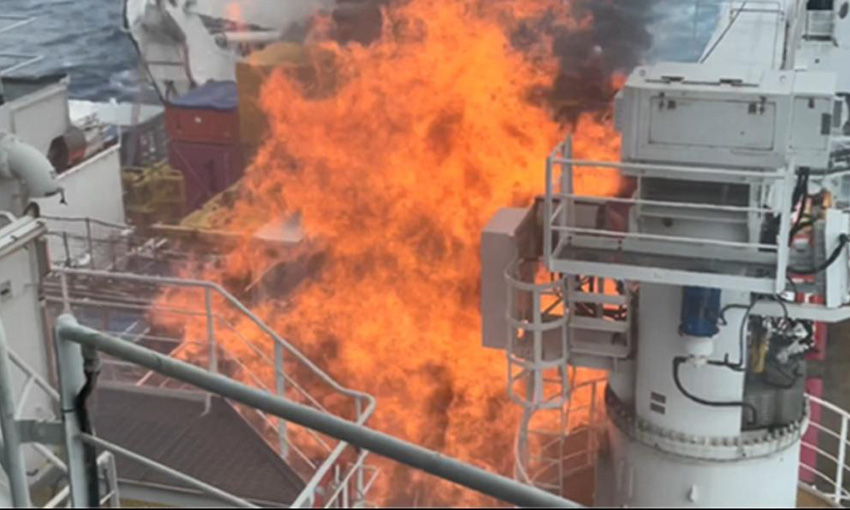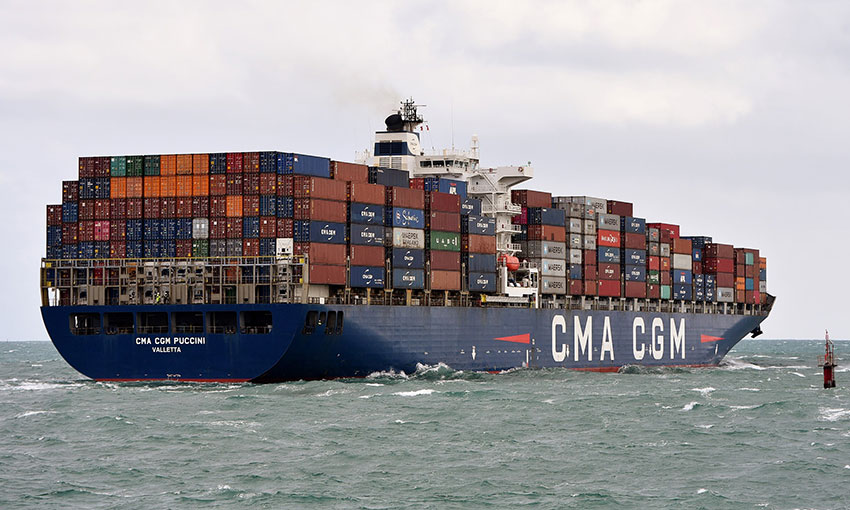AN INCORRECTLY fitted electrical component was behind the malfunction on liquefied hydrogen carrier Suiso Frontier, an investigation has found.
Suiso Frontier was berthed at Victoria’s Port of Hastings in January 2022 when a gas control equipment malfunction occurred.
The ship was on its maiden voyage from Kobe, Japan. It was built as a prototype vessel – the first of its kind – transporting liquefied hydrogen at an extremely low temperature as part of the Hydrogen Energy Supply Chain pilot project.
While the ship was berthed, a crewmember saw a gas flame briefly propagate from the gas combustion unit’s vent stack.
There was no fire or explosion, and no injuries, but the Australian Transport Safety Bureau launched an investigation into the malfunction and released its final report on Thursday this week (2 February).
The ATSB found the gas combustion unit’s air fan discharge dampers – which regulate the flow of air into the unit – were fitted with direct current (DC) electrical solenoid valves, which were incompatible with the 230 V alternating current (AC) supply from the GCU control system.
ATSB chief commissioner Angus Mitchell said during around 400 hours of service before incident occurred, the solenoid vales were subject to conditions they were not designed for.
“When one of these solenoid valves failed, the fan discharge damper it was operating closed,” he said.
“Consequently, the temperature of the gas combustion unit increased, eventually resulting in the discharge of flame from the unit’s vent stack.”
The ATSB also found the gas combustion unit was not equipped to detect the failure of the valve, nor the subsequent closure of the damper.
“Automated safety controls intended to detect a malfunction to prevent such an incident were not effective,” Mr Mitchell said.
In response to the incident, the gas combustion unit manufacturer fitted limit switches on each air fan discharge damper to monitor damper position, the ATSB said.
The manufacturer also programmed the system’s control logic to stop the unit if a fault is detected.
“The ATSB’s investigation highlights the importance of ensuring automated shipboard operating systems are equipped with safety controls to prevent hazardous consequences in the event of a malfunction,” Mr Mitchell said.
“The incident also shows the importance of stringent manufacturer quality controls to ensure correct system components are specified and fitted to equipment.”
Japan-flagged Suiso Frontier (IMO: 9860154) is 116 metres long, built in 2021 by Kawasaki Heavy Industries. It continued with its voyage to Japan days after the incident occurred in 2022.

